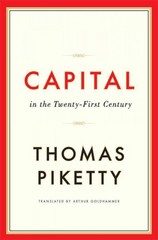Suppose the market for Wimbledon tickets is perfectly competitive. Suppose the demand for Centre Court tickets is given by Q = 20 0.005.\53. 54. 55. 56. 57. 58. 59. . What is the prime interest rate and how is it related to the federal funds rate? 61. 62. 63. . How did the Fed initiate a restrictive monetary policy before and after the mortgage debt 65. 66. JL' J ' " ' u LLJ' money? Which tool is the most used one by the FOMC? What happens to the supply of money when the Fed buys securities and when it sells securities? What is repo and reverse repo transactions? What happens to the supply of money when the Fed raises the reserve ratio and when it lowers it? What is the interest rate that the Federal Reserve changes to commercial banks when it lends money to commercial banks? Which monetary policy tool was introduced in 2008? What is the federal funds rate? How did the Fed initiate an expansionary monetary policy before and after the mortgage debt crisis? What is zero lower bound problem? What is quantitative easing? crisis? Skip the Taylor Rule. What is the cause-and-effect chain of expansionary and restrictive monetary policy? What are problems and complications of monetary policy? (lags, cyclical asymmetry, the liquidity trap) port a. above? 3. suppose the simplified consolidated balance sheet shown below is for the sunfire commercial banking afem and that all figures are in billions of dollars. Assume that the resumed reserve ratio is 20%. Liabilities and Net Worth Assets $1510 Reserves $310 Checkable Deposits Gov't. Securities $600 Loans $600 NOTE: Use the balance sheets on p. 4 for questions 3a. and 3b. Starting with the balance sheet shown above, illustrate what will happen if the Federal Reserve sells $10 billion in government securities to members of the public, who pay for the bonds with checks. Draw a new balance sheet showing how the consolidated balance sheet would look immediately after this transaction. b. Starting with the balance sheet shown above, illustrate what will happen if the Federal Reserve buys 520 billion in government securities from commercial banks. Draw a new balance sheet showing how the consolidated balance sheet would look immediately after this transaction. C. For each of the transactions above (in parts a. and b.) answer the following questions: 1) What change, if any, took place in the money supply as a direct and immediate result of each transaction? 2) What increase or decrease in the commercial banks' reserves took place in each transaction? 3) What change in the money-creating potential of the commercial banking system occurred because of each transaction? (Hint: What is the monetary multiplier in this example?) 4. a. If the required reserve ratio is 10%, what is the value of the monetary multiplier? If the required reserve ratio is reduced from 10% to 5%, what happens to the value of the monetary multiplier? multiplier). Explain in words why this makes sense (with respect to the banking system, not the formula for the b. If the monetary multiplier is 6, what is the required reserve ratio? Given this information, how could the Federal Reserve increase the money supply by $120 million?1. In the two-period small open (endowment) economy model reviewed in Chapter 3 of the textbook, when a consumer chooses to allocate all of its lifetime wealth to consumption in period 2 and if By = 0 then her C2 must be equal to: (a) Qit itri (b) Q2 + Itri (c) Q1 (1 + ri ) + Q2 (d) Q2(1 + ri) + Q1 (e) 21+92 2. When the world interest rate rises then the income effect leads to a(n): (a) decrease in consumption in period 1 if the country is a creditor (b) decrease in consumption in period 1 if the country is a debtor (c) increase in consumption in period 1 if the country is a debtor (d) decrease in consumption in period 2 if the country is a debtor 3. In the two-period model of chapters 3 and 4, a decrease in the world interest rate makes (a) consumption in period 1 more expensive relative to consumption in period 2 (b) consumption in period 1 less expensive relative to consumption in period 2 (c) the IBC rotate clockwise around the endowment point, becoming steeper (d) the IBC rotate counter clockwise around the endowment point, becoming less steep. (e) b and d (f) a and c 4. All else equal, an increase in the terms of trade of period 2 (temporary shock) (a) raises consumption in period 1 and improves the trade balance in period 1. (b) raises consumption in period 1 and worsens the trade balance in period 1. (c) does not affect the level of consumption in period 1 (d) does not affect the current account and the trade balance in period 1. 5. In chapter 4 we say that under imperfect information what matters for the determination of the current account is (a) the actual path of income (b) the expected path of income (c) both the actual path of income and the expected path of income (d) none of the above










